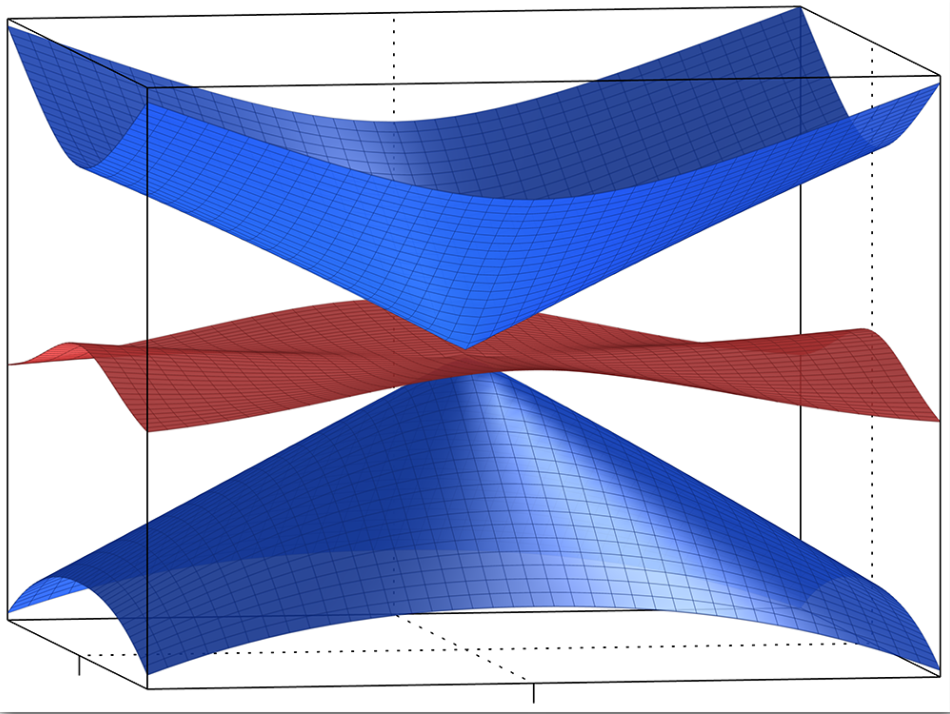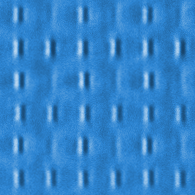Band structures
Periodically modulating optical properties of a material on the order of the wavelength of light affect the propagation of light in this material dramatically. Important representatives of such structures usually are artificially produced photonic crystals or photonic lattices. Typically, the refractive index is periodically modulated resulting in the formation of a band structure for the propagation constant of the light field.

In the one-dimensional case, one can create a dielectric layer system that can show a so-called photonic band gap. Similar to an electronic band gap that prohibits certain energy states of electrons in solids, here the propagation of light with certain frequency is forbidden. However, the full potential of photonic crystals becomes apparent only when using two- or three-dimensional structures, whose properties can be adapted dynamically.
Special attention is payed to structures which exhibit spectra singularities – points where certain variables such as the group velocity are not defined. One particularly interesting type of such singularities are called Dirac cones, where two conical bands touch at a single point. As a result, the group velocity is radial symmetric and the effective mass (local curvature of the band structure) disappears. Consequently, particles in the vicinity of these singularities are treated as relativistic particles. The occurrence of such Dirac cones is the explanation for many of the unique electrical properties of graphene.

The far-reaching analogies between solid state electronic systems and photonic lattices now allows to transfer many of these fundamental effects to optics where they can be explored and where novel effects can be demonstrated. In our group, we examine the various effects of light propagation in one- and two-dimensional photonic structures with such peculiar band structures. Moreover, lattices with host flat bands are of high interest. Localized light states that are associated with such bands can propagation propagate without diffraction through the lattice.
Artificially designed photonic lattices moreover allow to generate wave packets which can be characterized by a quantity called pseudospin. Previous research studies have shown that many complex processes such as the exceptional electronic properties of Graphene can be explained by an additional degree of freedom, this so-called pseudospin. In the past, fermionic spin-1/2 systems have been successfully simulated by light propagation in photonic lattices. One big advantage of the optics is that the wave function is directly visible as light intensity.

Recently, we have shown that it is possible to expand some concepts and to prepare light conditions that are described by an integer spin quantum number, i.e. bosonic systems. This can be achieved in a so-called Lieb-lattice, a square lattice of unit cells that collect three identical two-dimensional waveguides. We have realized it by direct laser writing in a fused silica glass slab. Each sublattice has its own light dispersion that characterizes the pseudospin.
Using structured illumination of the grating, specific pseudo spin states can be selectively excited. After propagation through the lattice, the intensity distribution shows the typical signatures of conical diffraction and the phase pattern contains phase singularities, so-called optical vortices. The appearance of these optical vortices and their topological charge depends on the different pseudospin states at the input and the output of the Lieb lattice.
In general, such results and findings allow further insights into the generation of light states with optical angular momentum that depends on the pseudospin. They represent a first step towards the realization of higher spin states (3/2, 2, 5/2, ...) which none of the known elementary particles show.
References:

